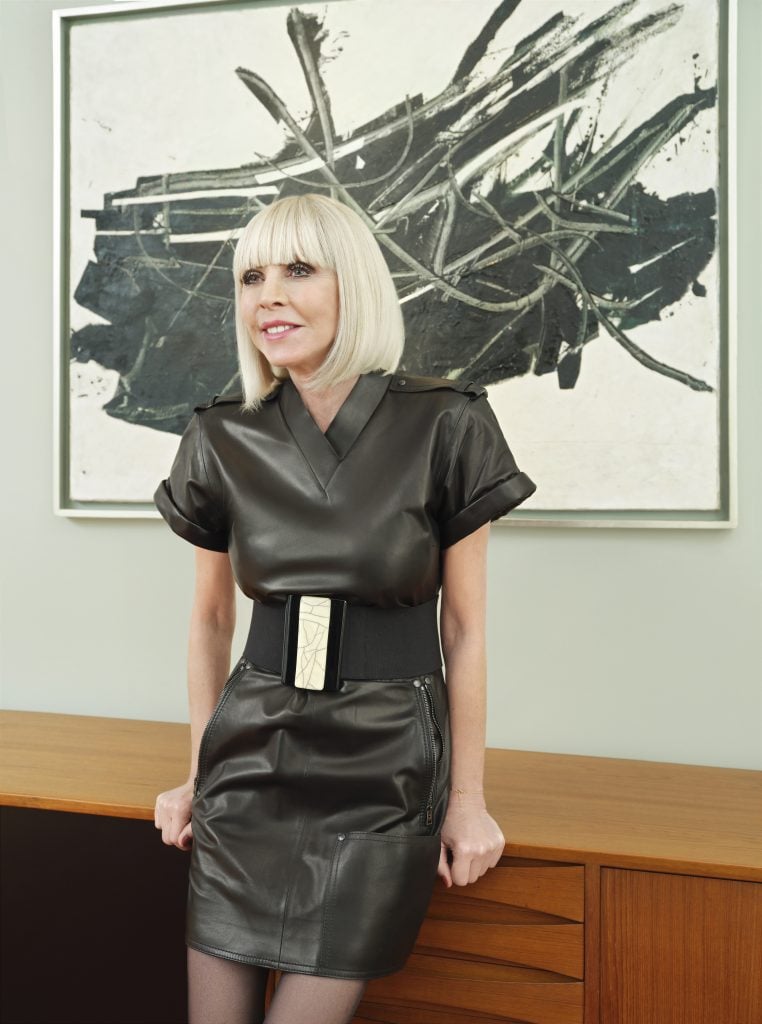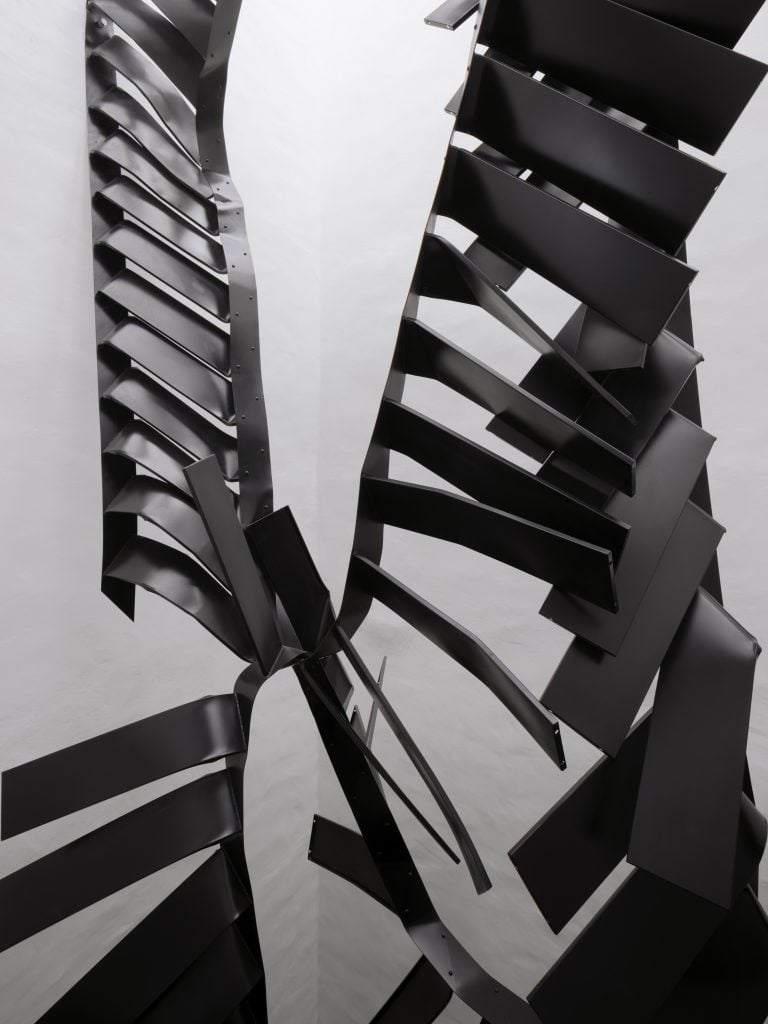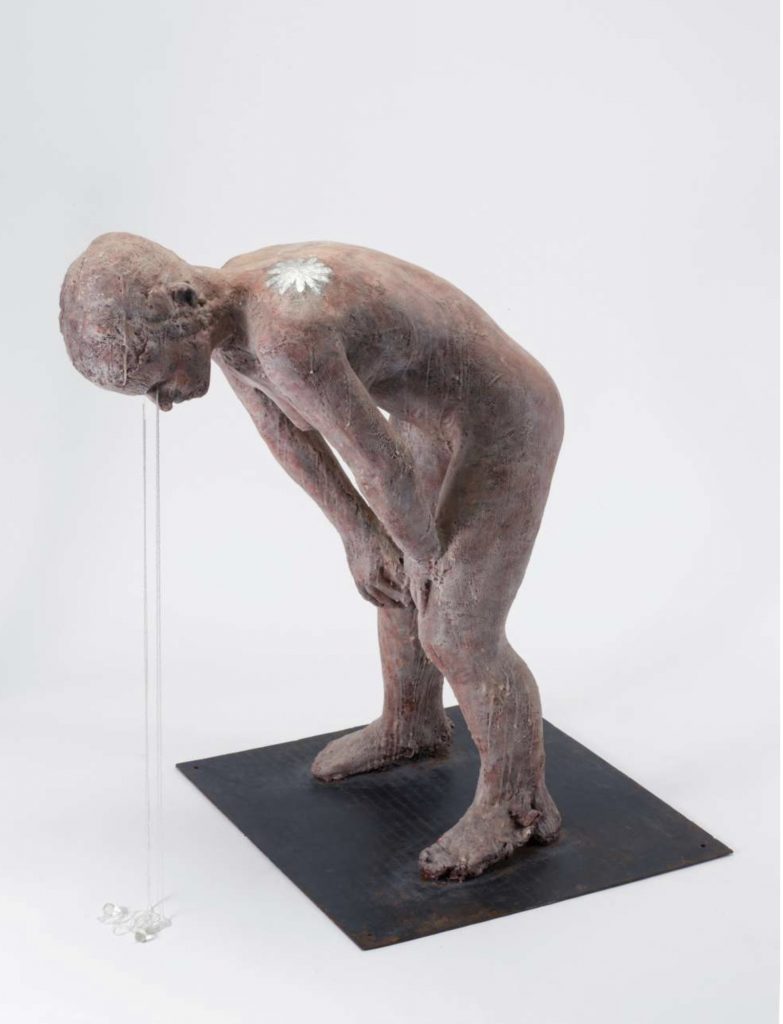People
What I Buy and Why: Grażyna Kulczyk on the Importance of Humility in Art Collecting, and the Marxist Artwork in Her Bathroom
We spoke to the Polish collector about her wide-ranging collection of women artists.

We spoke to the Polish collector about her wide-ranging collection of women artists.

Kate Brown

Grażyna Kulczyk is known for taking risks—a characteristic that has made her a force to reckon with in the Polish business world, where she has become the nation’s richest woman. This fearless attitude also guides her art collecting, which focuses on avant-garde practices by female artists whose work many would consider difficult to live with.
In 2019, the Polish entrepreneur, who invests in start-ups and female-owned companies, opened the experimental space Muzeum Susch, tucked away in a former monastery in the Swiss Engadin Valley.
The business-minded collector lives and buys by her 50:50 concept, investing 50 percent of her fortune into business and 50 percent into culture.
Her art collection is growing, and boasts ambitious projects by women artists, many of whom have been overlooked by the mainstream establishment. She started out collecting the work of Polish artists, but has since expanded to include Americans like Kara Walker, Eva Hesse, and Judy Chicago.
Her private museum is currently putting the finishing touches on the first wide-reaching museum retrospective of Italian pop artist Laura Grisi, who died in 2017.

Outside the © Studio Stefano Graziani; Muzeum Susch/Art Stations Foundation CH
What was your first purchase (and how much did you pay for it)?
I remember very well my first Sotheby’s auction acquisition after the economic system in Poland had changed—it was a wonderful 1960s painting by Antoni Tàpies. This was very symbolic; I had the feeling that I was finally included in this mythical, modern world of the West.
What was your most recent purchase?
There are two recent works that are particularly important to me: a very spectacular and large work by Kara Walker and a strong, emotional work by Kiki Smith. I have been observing the practices of both artists for quite some time. Both works are made to be shown to the public. When it comes to the collection, I am very methodical, however once I have made a decision on how the artist will contribute to the mission of the collection, I am impulsive and follow my intuition on the artwork itself. I bought both Walker’s and Smith’s works in New York.
Which works or artists are you hoping to add to your collection this year?
I have been looking for an early work by Carla Accardi from her heroic period in Rivolta femminile (“Women’s Revolt”), one of Italy’s first feminist groups and publishing houses in the 1970s.
What is the most expensive work of art that you own?
Personally, I most value art from a time when it was not yet an alternative financial instrument—in the wise period in the 1960s, ’70s, and even ’80s. Paradoxically, projects and works of art, which were then a natural record for artists, devoid of price, but only having intellectual value, today reach dizzying prices. Unfortunately, as collectors, we are complicit in the process of rising prices due to the acquisitions we make.
Where do you buy art most frequently?
I highly value the personal relationship with gallerists. They do tremendous work to research the art world and to maintain relationships with the artists to help them improve and understand their work.

Monika Sosnowska at Muzeum Susch. Photo: Stefano Graziani. Courtesy Muzeum Susch.
Is there a work you regret purchasing?
As an entrepreneur, I am used to the fact that projects require working with experts, which proves maturity, not uncertainty. But private collections have this human dimension, they are alive and full of dilemmas… Therefore, after all these years, the decision and risk of buying a work of art which after a while proves not suitable for my collection is a natural process for me—I can’t then say I regret any purchase decision I ever made.
What work do you have hanging above your sofa? What about in your bathroom?
It is not exactly above my sofa, but there is a Judy Chicago work which rather possesses the room due to its size! In my bathroom, there is a provocative work by Hannah Wilke titled Marxism and Art beware of Fascist Feminism.

What is the most impractical work of art you own?
I think probably most collectors and gallerists share a common opinion—size matters. Large (museum-size, as they used to call it) artworks are difficult to present, store, move around. The monumental Monika Sosnowska sculpture that fills the stairwell of Muzeum Susch, for example, was installed before we built the roof of the museum to be sure it could be accommodated.
What work do you wish you had bought when you had the chance?
I regret all works and artists that I missed buying because I had not properly appreciated or misread their work at the time. But this process helps me to learn and to be always alert and humble when confronted with art.
If you could steal one work of art without getting caught, what would it be?
Collecting evokes very strong, even sanguine emotions because it is not only a form of competition—the immortalization of one’s ego—but also of participation in something socially important. These emotions are not simple and straightforward, they are narcissistic and altruistic at the same time. Therefore I cannot even imagine such a theoretical situation.